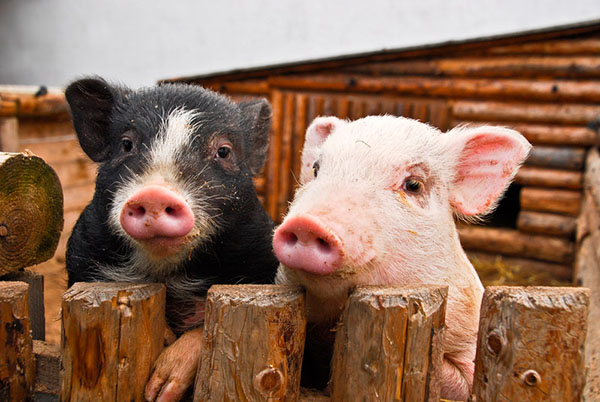Precision pig feeding reduces environmental impact

Adjusting the amount of nutrients in pig feed to meet the animal's real needs will result in a much lower environmental impact. Such conclusions were drawn from a study carried out in the framework of the EU Feed-a-Gene project by scientists from the University of Wageningen in collaboration with 22 international partners.

«The Feed-a-Gene project is exploring ways to improve the conversion of feed for pigs, fowls, and rabbits in different production systems, thereby reducing environmental impacts. The researchers focused on feed (resources and nutrients), genetic predisposition of animals, and how these two aspects might be better aligned.
"Three topics were relevant to us: animal breeding and ways to reduce nitrogen emissions to the environment, fodder processing technology, which can contribute to increasing its nutritional value and using the genetic characteristics of animals to select a feed formulation that improves their productivity," says Alfons Jansman, one of the researchers.
By improving feed conversion, nutrients are more efficiently absorbed, so that fewer minerals are removed from the animal's body with faeces and urine. This, in turn, reduces the impact on the environment due to nitrogen, moreover, increases the efficiency of protein use. "We investigated which processing technologies are best suited for releasing nutrients into raw materials. We took into account the taste qualities of the raw materials and analyzed what part benefits the animal, and what is released into the environment with excrement and urine, "Jansman explained.
In Sterksel, an alternative feeding system was tested, in which individual animals were given an adjustable mixture of two types of feed, adapted to the unique characteristics of a particular animal (for example, birth weight and genetic predisposition to protein production). "This system may be too costly to implement, but the underlying principles and results are applicable to further development of precision fodder supply concepts," Jansman says.
Similar studies were conducted on poultry in France, and France and Spain studied the effects of such feeding on rabbits. Wageningen University worked on this study for five years.
According to experts, the most effective way to improve feed conversion is the use of feed enzymes. Phytase, for example, makes it possible to significantly increase the absorption of phosphorus and thereby reduce its content in animal litter. Protease significantly reduces the release of nitrogenous compounds. Recently, the enzyme glucose oxidase (Bioxidase) has been gaining popularity, along with growth-stimulating and antibacterial properties, which contributes to better absorption of glucose. Accurate calculation of the necessary doses of enzymes can significantly reduce the cost of feed and increase the efficiency of raising farm animals.
SOURCE: Feedlot